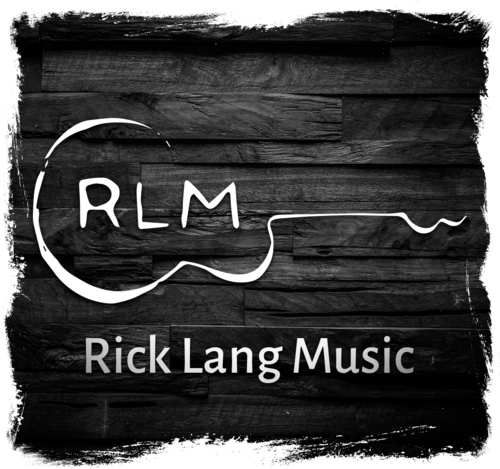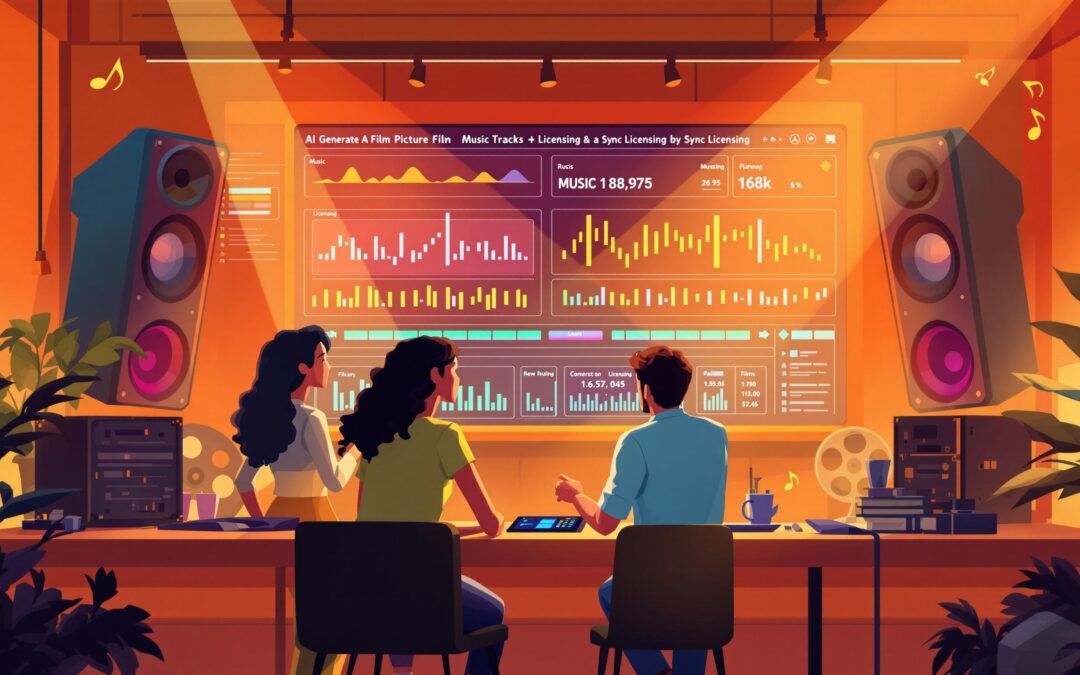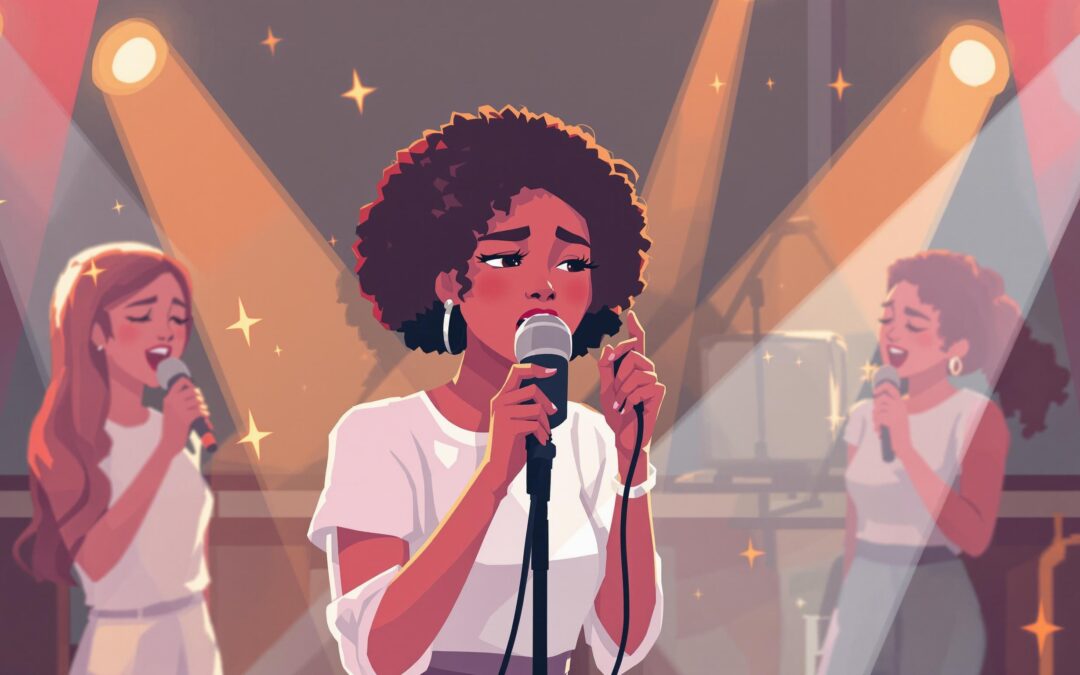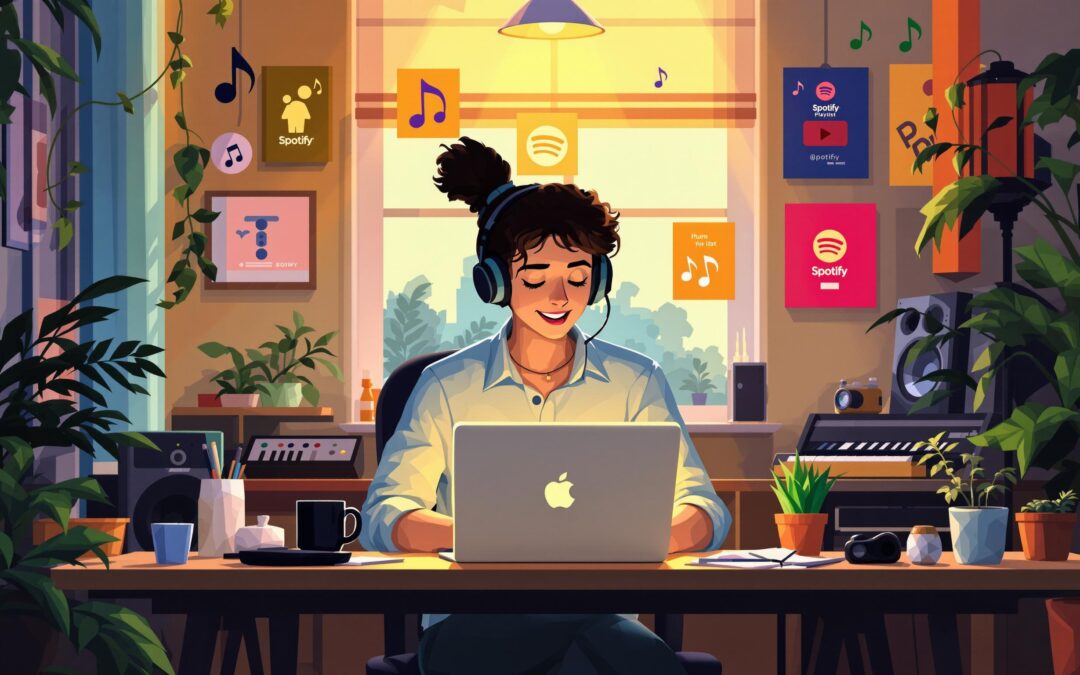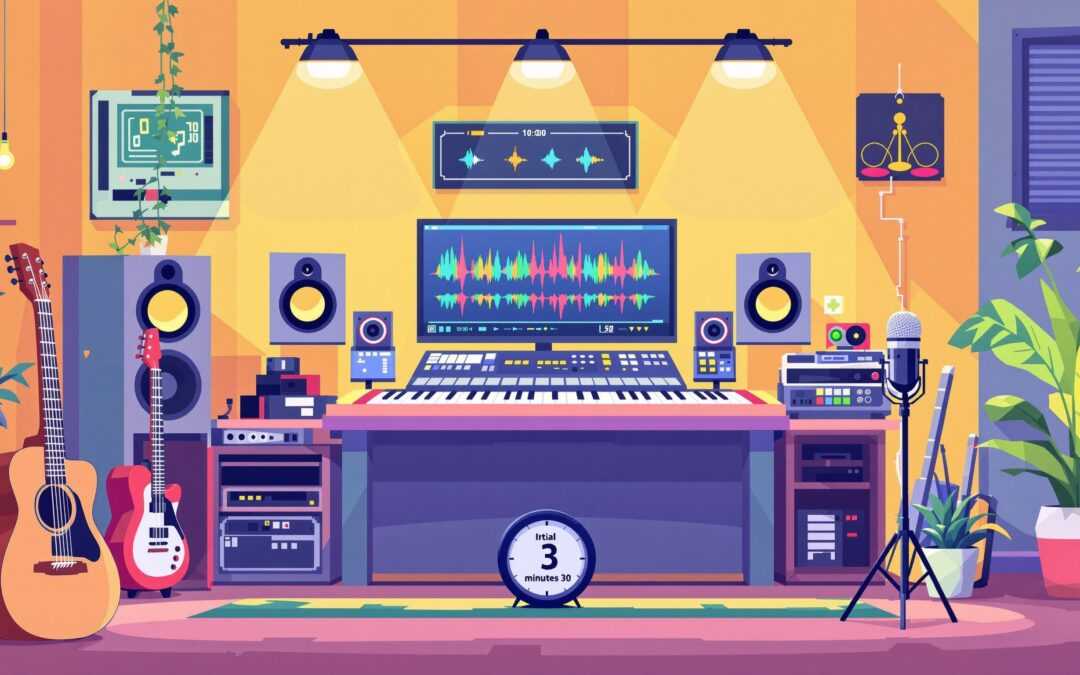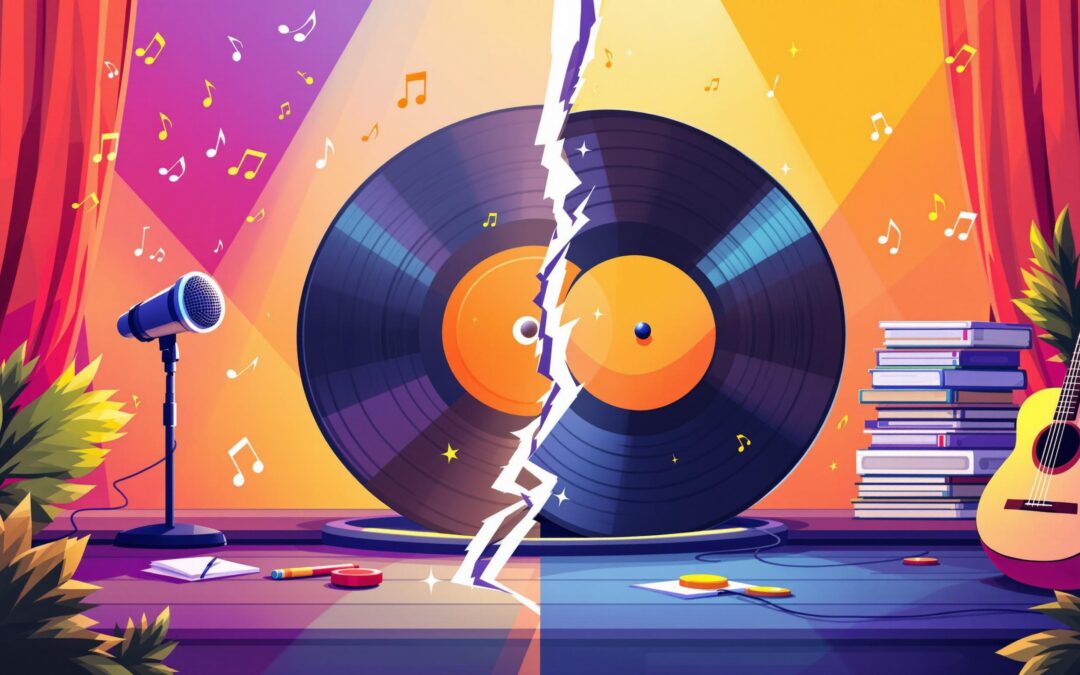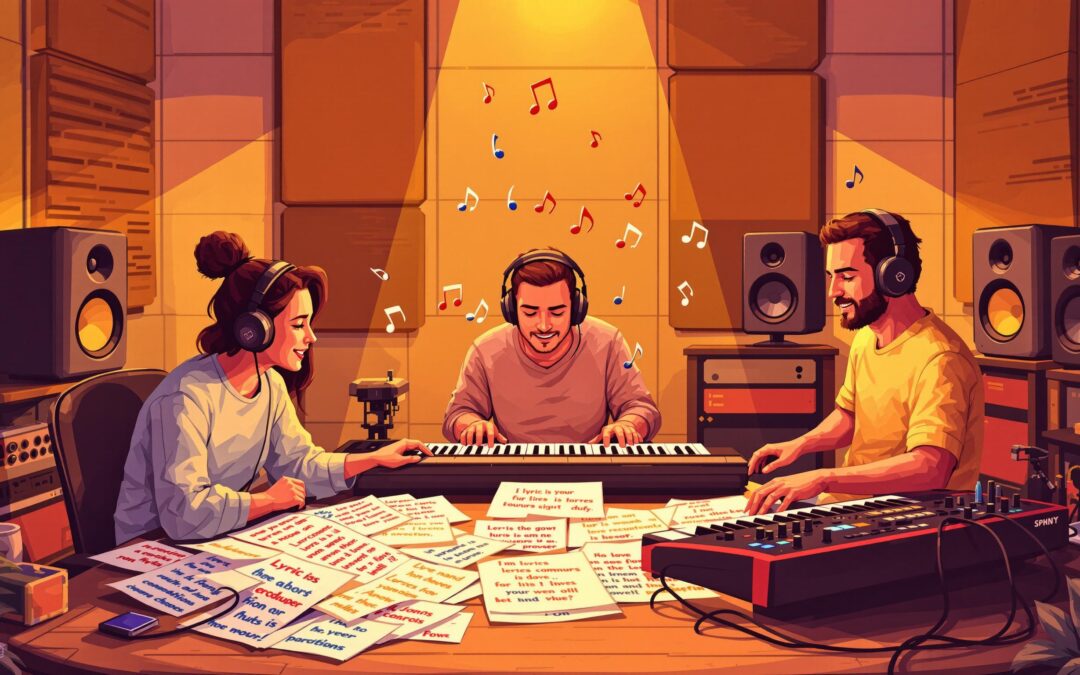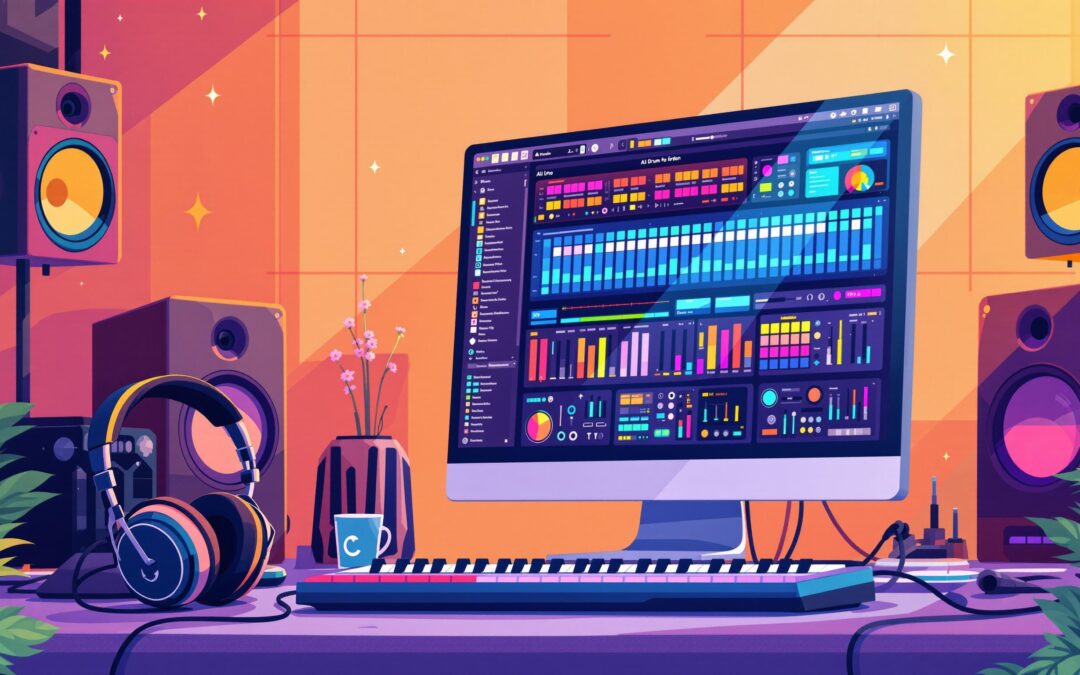Want your music to stand out in a crowded industry? With over 100,000 songs uploaded to Spotify daily and half of artists still "undiscovered", smart marketing is essential. Here’s how you can grow your fanbase and get your music heard:
- Build Your Online Presence: Create a website with key features like an embedded music player, tour dates, and a merch shop. Optimize social media profiles on Instagram, TikTok, and YouTube for engagement.
- Leverage Streaming Platforms: Claim your Spotify and Apple Music profiles. Use high-quality visuals, pitch your tracks for playlists, and analyze listener data to refine your strategy.
- Create Engaging Content: Share behind-the-scenes moments, use trending audio, and interact with your audience authentically. Tailor your content to each platform’s strengths.
- Network in the Industry: Collaborate with other artists, attend local events, and build relationships with music professionals.
- Track and Adjust: Use analytics to monitor growth, engagement, and audience demographics. Focus on what works and refine your efforts.
Quick Tip: Consistency and data-driven decisions are key. Start small, focus on platforms where your fans are active, and regularly adapt your strategy based on results.
Ready to take your music career to the next level? Let’s dive into the details.
The Best Way To Release Music In 2025
Setting Up Your Online Presence
Your online presence is the backbone of your music marketing efforts. Let’s make sure it’s built to last.
Building Your Artist Website
Think of your website as your digital home base – a place where fans can find everything about you and your music. Unlike social media platforms that may change or disappear, your website is fully yours to control.
Here are some popular website platforms to consider:
| Platform | Monthly Cost | Best For |
|---|---|---|
| Wix | $12 | Beginners who prefer drag-and-drop simplicity |
| Squarespace | $18 | Artists focused on visual design |
| WordPress | $50 | Advanced users needing e-commerce features |
Make sure your website includes these key features:
- An embedded music player with your latest tracks
- High-quality photos that represent your style
- A schedule of tour dates and upcoming events
- A merchandise shop
- An email signup form to connect with fans
- A press kit/EPK for industry contacts
- A design that works well on mobile devices
Setting Up Social Media Accounts
Start by focusing on platforms where your potential fans are most active. These are the essentials:
-
Instagram
- Switch to a Creator account for analytics
- Use your artist name consistently
- Choose the “Artist” category
- Write a bio that highlights your location and genre
- Use tools like Linktree to share multiple links
-
TikTok
- Share 15–30 second music clips
- Post behind-the-scenes moments
- Use trending audio effectively
- Interact with other musicians
-
YouTube
- Create a branded channel
- Add an engaging channel trailer
- Organize videos into playlists
- Enable community features for engagement
Keeping Your Brand Consistent
Consistency is key to building trust and recognition. Studies show that consistent branding can boost revenue by 10–20%, and 90% of fans expect a cohesive experience across platforms .
Develop a brand style guide that includes:
- Your logo and its variations
- A color palette with 2–3 main colors
- Typography choices
- Guidelines for photography styles
- Voice and tone preferences
- Social media templates
Using Social Media for Music Promotion
Building on your online presence, let’s dive into how to make the most of social platforms to promote your music effectively.
Choosing the Right Social Platforms
Focus on platforms that align with your music style and audience. Here’s a quick breakdown of how different platforms can work for you:
| Platform | Best For | Key Features | Content Focus |
|---|---|---|---|
| Visual storytelling | Stories, Reels, IGTV | Behind-the-scenes, photo shoots, short clips | |
| TikTok | Viral potential | Short videos, duets | Music snippets, challenges, trends |
| YouTube | Long-form content | Live streams, tutorials | Full music videos, covers, tutorials |
Start by focusing on 3–5 platforms and get comfortable with them before branching out.
"Like art and music, form and function matter in Social Media"
Once you’ve chosen your platforms, the next step is creating content that resonates with your audience.
Crafting Posts That Connect
Constant promotion won’t cut it. Building a connection is key. Data shows that 20% of fans often drive 80% of engagement on Instagram .
Here’s how to keep your audience engaged:
- Share authentic behind-the-scenes moments.
- Ask questions to spark conversations.
- Use tools like polls, quizzes, and stickers.
- Respond to comments quickly to show you’re listening.
- Highlight both your wins and challenges.
"Success is measured by engagement, not reach." – Corey Denis, Cyber PR Music
Now, let’s look at how to tailor your approach for each platform.
Tips for Instagram, TikTok, and YouTube
Each platform has its own vibe, so your strategy should match:
- TikTok: Short, creative content is king. For example, Doja Cat’s 15-second clip led to a dance challenge that turned "Say So" into a viral hit .
- Instagram: Post regularly, use relevant hashtags, and engage with every comment and DM .
- YouTube: Grab attention early, provide value, and always end with a clear call to action .
sbb-itb-1c6af30
Making the Most of Streaming Platforms
Setting Up Spotify and Apple Music Profiles

Think of your streaming profiles as your digital storefronts – they’re often the first impression new listeners get. Make sure to claim them on Spotify for Artists and Apple Music for Artists. Use high-quality visuals and craft a bio that tells your story while naturally including relevant keywords . This is how you turn casual listeners into dedicated fans. For Apple Music, aim for profile photos that are at least 800×800 pixels, though 2,400×2,400 pixels is ideal for the best quality.
"Pitching doesn’t guarantee playlist placement. If your song doesn’t get picked, it may still get discovered later. Stay on our editors’ radar by building your fanbase and engaging with your audience on Spotify and beyond." – Spotify
Getting Your Music on Playlists
To increase your chances of landing on editorial playlists, pitch your music through Spotify for Artists at least seven days before your release . Be specific in your pitch – include details like the genre, mood, production style, track story, and your marketing plans . Spotify’s editorial team often prioritizes tracks that align with a playlist’s overall vibe, even if the artist has a smaller following . If you secure a spot, use the momentum to refine your promotional strategy and expand your reach. Don’t forget to use the data these platforms provide to guide your next steps.
Using Platform Tools and Analytics
Once your profiles and playlist strategies are in place, take advantage of the analytics tools offered by Spotify and Apple Music. These tools let you track metrics like monthly listeners, geographic data, and playlist performance . Use this data to identify cities where your music resonates most – these could be great locations for future performances. You can also focus your marketing efforts on playlists that are driving the most engagement .
Building Industry Connections
Once you’ve established your online presence, the next step is creating meaningful connections within the music industry. These relationships can help you expand your reach and open up new opportunities.
Finding Artists to Collaborate With
Look for collaborators whose skills complement your own. Platforms like SoundBetter, Vampr, and Kompoz are great places to connect with artists who share your musical vision . Take time to engage with their work – leave thoughtful comments on their social media posts, share their music, and interact in a way that feels genuine . Building these early connections lays the groundwork for partnerships that can grow into something more significant.
"No one can whistle a symphony. It takes a whole orchestra to play it." – H.E. Luccock
Getting Involved in Local Music
While online connections are important, don’t overlook the value of your local music scene. Volunteering at local venues or festivals can give you behind-the-scenes experience and help you meet key players in the industry .
| Activity | Purpose | Expected Outcome |
|---|---|---|
| Live Show Attendance | Meet performers and venue staff | Build direct connections with musicians |
| Event Volunteering | Learn event operations | Gain industry knowledge and contacts |
| Local Music Groups | Join community organizations | Access regular performance opportunities |
| Open Mic Nights | Test new material | Get immediate audience feedback |
Stay active on social media by following local venues, promoters, and fellow artists. This keeps you updated on events and helps you establish a stronger online presence within your community .
Connecting with Music Professionals
A professional Electronic Press Kit (EPK) is essential for showcasing your work and achievements . When attending events, bring a concise EPK along with business cards that include your social links. Use these tools to connect with people like music producers, venue promoters, local radio DJs, journalists, and artist managers.
Networking in the music world isn’t just about exchanging contacts – it’s about building lasting relationships . Research the projects of the people you want to connect with, and mention specific achievements that resonate with you. Showing genuine interest makes your outreach more personal and increases the chances of a meaningful connection .
Tracking Your Marketing Results
Making decisions based on data is key to advancing your music career.
Using Analytics to Track Growth
Take advantage of tools like Spotify, Apple Music, and social media dashboards to measure streams, audience demographics, and engagement. Focus on these key metrics:
| Platform | Key Metrics to Track | Why It Matters |
|---|---|---|
| Spotify | Monthly listeners, playlist adds, save rate | Shows audience growth and how appealing your music is |
| Story views, post engagement, follower growth | Helps gauge how effective your content is | |
| TikTok | Video completion rate, shares, follower gain | Indicates potential for viral reach |
| YouTube | Watch time, subscriber growth, click-through rate | Highlights overall content performance |
Research indicates that "nearly 70% of fans discover new music through social media platforms" . Tracking these numbers lays the groundwork for deeper analysis.
Understanding Your Numbers
Using this data effectively can be a game-changer. For example, data-driven organizations are 23 times more likely to attract customers, six times more likely to retain them, and 19 times more likely to increase profitability .
Keep an eye on these areas:
- Engagement rates: Compare likes, comments, and shares across different types of content.
- Growth trends: Monitor monthly increases in followers and streams.
- Geographic data: Identify locations where your music is resonating the most.
- Peak activity times: Observe when your audience is most active and engaged.
"Leading marketers are 56% more likely to agree that decisions backed by data are superior to those based on gut instinct and experience." – Google
Improving Based on Results
Use these insights to fine-tune your marketing strategy and make smarter decisions. Here’s how:
-
Spot Performance Patterns
Identify which content drives the most engagement and replicate successful elements, like behind-the-scenes clips. -
Optimize Your Timing
Post during the times your audience is most active to boost visibility. -
Adjust Your Strategy
Focus more on platforms and content types that perform well, and scale back on those that don’t. Analyze engagement trends and refine your posting schedule accordingly.
Conclusion
Main Points Review
Successful music marketing combines a strong online presence with meaningful industry relationships. Research highlights how social media plays a major role in helping fans discover new music . Here’s a quick breakdown of key strategies:
| Marketing Pillar | Key Actions | Expected Impact |
|---|---|---|
| Digital Presence | Build a website, create an EPK, optimize social media | Creates a base for fan discovery and engagement |
| Content Strategy | Post regularly, share videos, behind-the-scenes content | Strengthens fan connections and drives organic growth |
| Industry Network | Engage in the local scene, collaborate with other artists, grow professional connections | Expands your reach and opens career opportunities |
| Analytics | Track platform metrics, analyze audience data, refine strategies | Helps improve results through data-driven decisions |
These pillars offer a clear direction for taking action. Use them to shape your next steps and keep building momentum for your music career.
Next Steps for Success
Ready to take action? Here’s how to get started:
- Pick your platforms: Choose two or three social media channels where your fans are most active. Focus your energy there.
- Plan your content: Post a mix of promotional material and behind-the-scenes updates to connect with your audience on a personal level.
- Monitor and adjust: Use analytics tools from streaming services and social platforms to see what works. Refine your approach based on the data.
Consistency and flexibility are key in music marketing. Keep an eye on your progress, make adjustments as needed, and stay committed to your goals.

